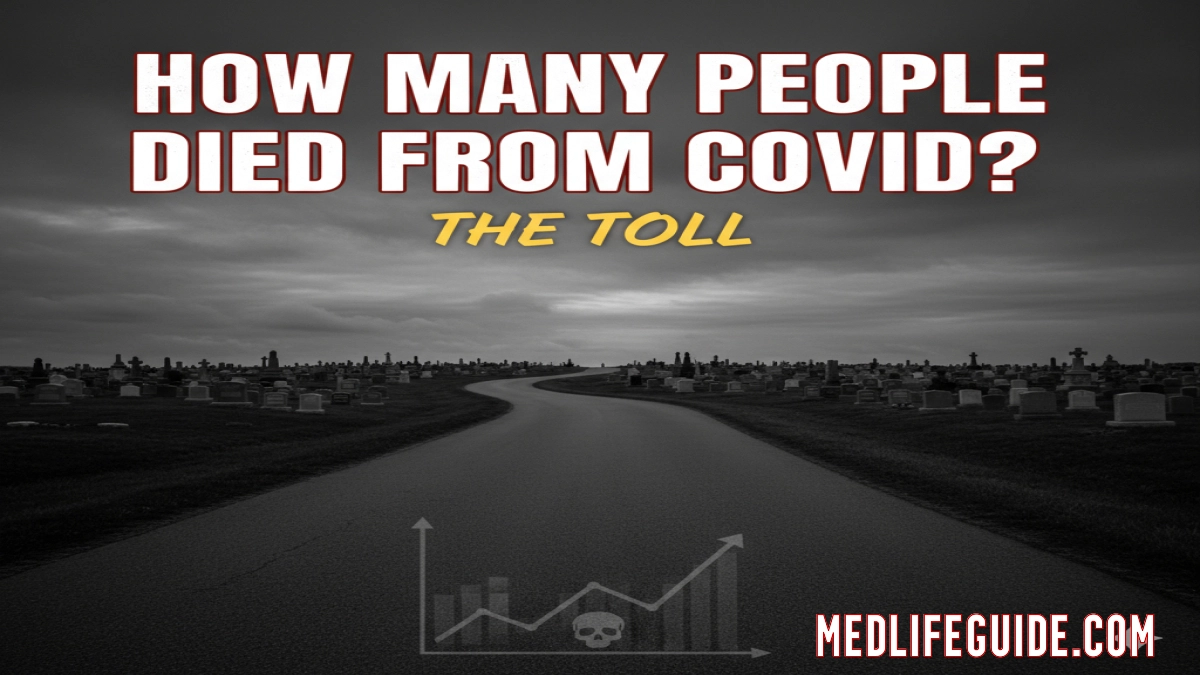The world changed in ways we could scarcely imagine back in early 2020, when whispers of a novel virus from Wuhan began rippling across global news feeds. What started as a distant health alert snowballed into a pandemic that tested the resilience of healthcare systems, economies, and societies everywhere. At the heart of this upheaval lies a sobering question: just how many lives were claimed by this invisible foe? Pinning down an exact number isn’t straightforward—official tallies, excess mortality data, and regional discrepancies all paint a complex picture. But by sifting through the evidence from trusted health organizations, we can arrive at a clearer understanding of the human toll.
This isn’t just about cold statistics; it’s about grasping the scale of loss to honor those affected and prepare for whatever comes next. Drawing from reports by the World Health Organization (WHO), Centers for Disease Control and Prevention (CDC), and independent analyses, we’ll break it down step by step. Whether you’re seeking answers for personal reflection, academic research, or public health awareness, this deep dive aims to provide clarity amid the fog of conflicting reports.
The Official Global Death Toll: What the Numbers Say
When we talk about confirmed COVID-19 deaths, we’re relying on data reported by governments to international bodies like the WHO. As of mid-2024, the cumulative global figure stands at over 7 million deaths directly attributed to the virus. This milestone was crossed in May 2023, but it’s worth noting that reporting has slowed as the acute phase of the pandemic wanes.
- Key Milestones in Reporting:
- By the end of 2020: Approximately 1.8 million deaths worldwide, with surges in Europe and the Americas driving the bulk.
- 2021 Peak: Over 3.5 million additional deaths, fueled by the Delta variant and uneven vaccine rollouts.
- 2022 and Beyond: Around 1.2 million more, as Omicron waves hit but vaccines and treatments mitigated severity.
These numbers come from laboratory-confirmed cases where COVID-19 was listed as the primary or contributing cause on death certificates. The WHO’s dashboard, updated weekly, serves as the gold standard here, aggregating data from 194 member states. Yet, as any epidemiologist will tell you, this is likely an undercount. Testing limitations, especially in low-resource settings, meant many deaths went unrecorded.
Consider India, for instance, where official figures topped 530,000 by 2023, but experts from The Economist’s excess mortality model suggest the real number could be five times higher—closer to 2.7 million—due to overwhelmed hospitals during the 2021 Delta surge. This discrepancy highlights a universal challenge: not every victim gets a test or a formal diagnosis.
Excess Mortality: A Broader Lens on the Pandemic’s Impact
To get a fuller picture, we turn to excess mortality—a metric that compares actual deaths during the pandemic to what would be expected based on pre-2020 trends. This approach captures not just direct COVID-19 fatalities but also indirect ones, like those from delayed medical care or overwhelmed systems.
According to a 2022 WHO study published in The Lancet, excess deaths from 2020 to 2021 alone totaled about 14.9 million globally—more than double the official COVID-19 count at the time. Extending this to 2023, estimates from the Institute for Health Metrics and Evaluation (IHME) at the University of Washington push the figure to around 18-20 million. Why the gap?
- Direct vs. Indirect Causes:
- Direct: Respiratory failure from the virus itself.
- Indirect: Heart attacks untreated due to hospital bed shortages, or suicides amid lockdown isolation.
In the United States, the CDC reports over 1.1 million official COVID-19 deaths as of 2024, but excess mortality analysis from Columbia University estimates 1.3 million total excess deaths through 2022. Europe saw similar patterns; the United Kingdom’s Office for National Statistics pegged excess at 200,000, against 180,000 confirmed cases.
This method isn’t perfect—seasonal flu variations or aging populations can skew baselines—but it’s a robust tool for understanding the pandemic’s ripple effects. For physical health implications, excess mortality underscores how the virus exacerbated vulnerabilities in chronic conditions like diabetes and hypertension, where delayed check-ups led to fatal complications.
Regional Breakdowns: Where the Toll Was Heaviest
No two countries weathered the storm the same way, shaped by factors like population density, healthcare infrastructure, and policy responses. Let’s zoom in on the hardest-hit regions.
The Americas: A Continent in Crisis
The Western Hemisphere bore a disproportionate burden, with the U.S. and Brazil leading the grim ledger.
- United States: Over 1.1 million deaths, per CDC data. Hotspots like New York City in 2020 saw daily peaks of 800 deaths, while later waves hit the South hardest. Vaccination campaigns averted an estimated 1.1 million more deaths by 2022, according to Commonwealth Fund modeling.
- Brazil: Around 700,000 official deaths, but excess estimates from Fiocruz suggest up to 1 million. Indigenous communities in the Amazon suffered acutely, with mortality rates 50% above national averages due to limited access to care.
- Mexico and Peru: These nations reported per capita rates among the world’s highest—over 3,000 deaths per million in Peru—exacerbated by informal economies that couldn’t afford lockdowns.
Public health experts, like those at Johns Hopkins, note that socioeconomic disparities amplified the toll here, with low-income and minority groups facing higher exposure risks.
Europe: Waves of Grief Across Borders
Europe’s experience was marked by early hotspots and resilient recoveries.
- United Kingdom: 230,000 deaths, with excess mortality peaking at 15% above baseline in 2020. The elderly in care homes were particularly vulnerable, accounting for 30% of fatalities.
- Italy and Spain: The pandemic’s European epicenter in spring 2020, with Italy logging 190,000 deaths. Lombardy region’s hospitals were overrun, leading to triage decisions that still haunt medical professionals.
- Russia and Eastern Europe: Official counts hover at 400,000 for Russia, but independent trackers like COVID-19 Excess Mortality Collaborators estimate double that, pointing to underreporting tied to political pressures.
The European Centre for Disease Prevention and Control (ECDC) highlights how stringent lockdowns in places like Germany (death toll: 170,000) saved lives compared to more lax approaches elsewhere.
Asia and Africa: Underreported Realities
Asia’s vast scale masks huge variances.
- India: As mentioned, official 530,000 vs. excess 4-5 million. The 2021 oxygen shortages in Delhi were a heartbreaking low point.
- China: Strict zero-COVID policies kept official deaths under 5,000 until late 2022’s abrupt pivot, which unleashed a surge estimated at 1-2 million by Airfinity analytics.
Africa’s story is one of resilience amid scarcity. The WHO reports 260,000 deaths continent-wide, but modeling from Imperial College London suggests 3 million excess—driven by weak surveillance in rural areas. South Africa, with better tracking, recorded 100,000 deaths, offering a glimpse of the hidden scale elsewhere.
These disparities reveal how geography and governance intertwined with the virus’s spread, affecting physical health outcomes from urban slums to remote villages.
Factors Influencing Death Counts: Beyond the Virus Itself
Why do numbers vary so wildly? It’s not just about infection rates.
Underreporting and Testing Gaps
In many developing nations, only 10-20% of suspected cases get tested, per WHO audits. This leads to “probable” death categories that some countries ignore. The Our World in Data project estimates global underreporting at 2-3 times the official tally.
Variant Waves and Vaccine Equity
Alpha, Delta, and Omicron each shifted the lethality landscape. Delta was deadliest, with a case fatality rate (CFR) of 2-3%, per Nature studies. Vaccines slashed this dramatically—by 90% in high-income countries—but global inequity meant only 20% of Africans were fully vaccinated by 2022, prolonging the toll.
Comorbidities and Vulnerable Populations
COVID-19 didn’t strike blindly; it preyed on the unwell. The CDC notes 95% of U.S. deaths involved underlying conditions like obesity (40% of cases) or cardiovascular disease. Elderly over 65 accounted for 75% of global fatalities, emphasizing the need for targeted protections in physical health strategies.
Lessons Learned: Honoring the Lost Through Action
Reflecting on these figures isn’t morbid—it’s essential for healing and prevention. The pandemic exposed fragilities in global health systems, from supply chain breakdowns to misinformation’s spread.
- Actionable Takeaways for Physical Health:
- Boost Vaccination and Boosters: Even post-pandemic, annual shots remain crucial for at-risk groups to prevent long COVID symptoms like fatigue and organ damage.
- Address Health Inequities: Community programs targeting underserved areas can reduce future excess deaths by improving baseline care for chronic illnesses.
- Enhance Surveillance: Investing in rapid testing and data-sharing, as recommended by the Global Pandemic Treaty discussions, could cut underreporting by half.
- Personal Resilience: Simple habits—regular exercise, balanced nutrition, and mental health check-ins—build defenses against respiratory threats.
Imagine a world where the next outbreak doesn’t claim millions because we’ve learned from this one. Personal stories abound: a nurse in Brazil who lost colleagues to exhaustion, or a family in New York rebuilding after early losses. These narratives, shared in outlets like The New York Times survivor series, humanize the stats.
For deeper dives, consider linking to resources on [vaccine efficacy studies] or [long-term COVID effects on physical health]. This tragedy, while immense, has forged pathways to better preparedness—ensuring fewer questions like this in the future.

